Showing Spotlights 857 - 864 of 2783 in category All (newest first):
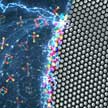 Researchers have successfully demonstrated a facile but effective regulation strategy to render uniform Li deposits by incorporating fluoroethylene carbonate additives. This addresses an issue where safety and uniform deposits of Li ion are critical issues for promoting the practical application of metallic Li as anode for post Li-ion batteries, including rechargeable Li-S, Li-air batteries, and even Li metal batteries which utilize intercalation compounds as cathodes.
Researchers have successfully demonstrated a facile but effective regulation strategy to render uniform Li deposits by incorporating fluoroethylene carbonate additives. This addresses an issue where safety and uniform deposits of Li ion are critical issues for promoting the practical application of metallic Li as anode for post Li-ion batteries, including rechargeable Li-S, Li-air batteries, and even Li metal batteries which utilize intercalation compounds as cathodes.
Jan 30th, 2017
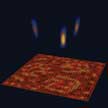 Compact optical components are crucial to realize miniaturized optical systems and integrated optoelectronic devices. Plasmonic metasurfaces - structured materials in 2D with rationally designed, subwavelength-scale building blocks - have drawn great interest because they can control light based on subwavelength structures. These planar devices are attractive for applications ranging from high resolution imaging to 3D holography. New work describes the design and prototyping of single-crystalline TiN plasmonic metasurfaces based on subwavelength hole arrays.
Compact optical components are crucial to realize miniaturized optical systems and integrated optoelectronic devices. Plasmonic metasurfaces - structured materials in 2D with rationally designed, subwavelength-scale building blocks - have drawn great interest because they can control light based on subwavelength structures. These planar devices are attractive for applications ranging from high resolution imaging to 3D holography. New work describes the design and prototyping of single-crystalline TiN plasmonic metasurfaces based on subwavelength hole arrays.
Jan 27th, 2017
 Liquid crystals used in modern devices such as laptops, tablets and smartphones typically contain a small fraction of ionic contaminants. These ion contaminants can originate from multiple sources during the chemical synthesis of materials, in the process of assembling the device, and in its daily use.
In the case of LCDs, mobile ions in liquid crystals lead to such undesirable effects as image sticking, image flickering, and slow response. A promising solution to reduce the concentration of mobile ions in liquid crystal devices can be found by merging liquid crystals and nanotechnology.
Liquid crystals used in modern devices such as laptops, tablets and smartphones typically contain a small fraction of ionic contaminants. These ion contaminants can originate from multiple sources during the chemical synthesis of materials, in the process of assembling the device, and in its daily use.
In the case of LCDs, mobile ions in liquid crystals lead to such undesirable effects as image sticking, image flickering, and slow response. A promising solution to reduce the concentration of mobile ions in liquid crystal devices can be found by merging liquid crystals and nanotechnology.
Jan 23rd, 2017
 Frost and ice accumulation result in significant decreases in the performance of ships, wind turbines, and heat exchangers. The use of active chemical, thermal, and mechanical methods of ice removal is time consuming and costly in operation. The development of passive methods to inhibit condensation, frost and ice formation is an attractive alternative. Examples are anoengineered anti-frost and anti-icing superhydrophobic and lubricant impregnated surfaces.
Frost and ice accumulation result in significant decreases in the performance of ships, wind turbines, and heat exchangers. The use of active chemical, thermal, and mechanical methods of ice removal is time consuming and costly in operation. The development of passive methods to inhibit condensation, frost and ice formation is an attractive alternative. Examples are anoengineered anti-frost and anti-icing superhydrophobic and lubricant impregnated surfaces.
Jan 13th, 2017
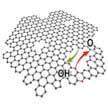 The oxygen reduction reaction (ORR) is the core process - but also the bottleneck - for the cathode reaction of energy-conversion devices like certain types of fuel cells and metal-air batteries. Nanocarbon materials are very promising alternatives for the noble metal catalysts, especially platinum, that have been used to boost this reaction. New work comprehensively reviews and correlates activity origins of nanocarbon-based ORR electro�catalysts, considering the dopants, edges, and defects. Specific doping at defective edges is expected to render practical applications for metal-free nanocarbon electrocatalysts.
The oxygen reduction reaction (ORR) is the core process - but also the bottleneck - for the cathode reaction of energy-conversion devices like certain types of fuel cells and metal-air batteries. Nanocarbon materials are very promising alternatives for the noble metal catalysts, especially platinum, that have been used to boost this reaction. New work comprehensively reviews and correlates activity origins of nanocarbon-based ORR electro�catalysts, considering the dopants, edges, and defects. Specific doping at defective edges is expected to render practical applications for metal-free nanocarbon electrocatalysts.
Jan 12th, 2017
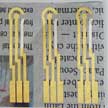 Paper, probably the cheapest and most widely used flexible and eco-friendly material in daily life, is a promising substrate for making flexible devices ranging from electronics to microfluidics, energy storage and sensors. In new work, researchers have developed a new and reliable method to achieve conformal coating of individual cellulose fibers in the paper and the fabrication of a metal electrode via patterning of gold and silver layers on the coated paper.
Paper, probably the cheapest and most widely used flexible and eco-friendly material in daily life, is a promising substrate for making flexible devices ranging from electronics to microfluidics, energy storage and sensors. In new work, researchers have developed a new and reliable method to achieve conformal coating of individual cellulose fibers in the paper and the fabrication of a metal electrode via patterning of gold and silver layers on the coated paper.
Jan 10th, 2017
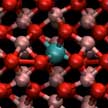 Lanthanide dopants play an important role in desirable phase transformations of aluminum oxide (alumina) in order to achieve optimized physical and chemical properties. For example, the presence of dopants strengthens the grain boundaries of alumina, largely affecting its mechanical properties. New research indicates that there are significant structural changes to the lattice with addition of the dopant, and that understanding these effects will lead to future research for addressing these challenges.
Lanthanide dopants play an important role in desirable phase transformations of aluminum oxide (alumina) in order to achieve optimized physical and chemical properties. For example, the presence of dopants strengthens the grain boundaries of alumina, largely affecting its mechanical properties. New research indicates that there are significant structural changes to the lattice with addition of the dopant, and that understanding these effects will lead to future research for addressing these challenges.
Jan 9th, 2017
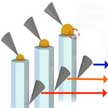 Electrical contacts are essential components for any electrical device and when a lack of control over the final properties is present designing and optimising the system is impossible. The ability to define the contacts as Schottky or Ohmic with high or low resistance is complicated by the 2-D, 1-D or quasi 1-D nature of many nanomaterials. That's why researchers have developed a deep understanding of a unique effect at these length scales that occurs in nanowires and combines the synergistic relationship between metal nanocatalyst particles and nanowires.
Electrical contacts are essential components for any electrical device and when a lack of control over the final properties is present designing and optimising the system is impossible. The ability to define the contacts as Schottky or Ohmic with high or low resistance is complicated by the 2-D, 1-D or quasi 1-D nature of many nanomaterials. That's why researchers have developed a deep understanding of a unique effect at these length scales that occurs in nanowires and combines the synergistic relationship between metal nanocatalyst particles and nanowires.
Jan 5th, 2017
 Researchers have successfully demonstrated a facile but effective regulation strategy to render uniform Li deposits by incorporating fluoroethylene carbonate additives. This addresses an issue where safety and uniform deposits of Li ion are critical issues for promoting the practical application of metallic Li as anode for post Li-ion batteries, including rechargeable Li-S, Li-air batteries, and even Li metal batteries which utilize intercalation compounds as cathodes.
Researchers have successfully demonstrated a facile but effective regulation strategy to render uniform Li deposits by incorporating fluoroethylene carbonate additives. This addresses an issue where safety and uniform deposits of Li ion are critical issues for promoting the practical application of metallic Li as anode for post Li-ion batteries, including rechargeable Li-S, Li-air batteries, and even Li metal batteries which utilize intercalation compounds as cathodes.
 Subscribe to our Nanotechnology Spotlight feed
Subscribe to our Nanotechnology Spotlight feed





